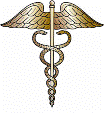
United States Public Health Resources
Date of this Version
2012
Citation
Community Dent Oral Epidemiol 2012; 40: 134–144
Abstract
Objective: The purpose of this study is to examine the associations among depression, anxiety, use of oral health services, and tooth loss.
Methods: Data were analysed for 80 486 noninstitutionalized adults in 16 states who participated in the 2008 Behavioral Risk Factor Surveillance System. Binomial and multinomial logistic regression analyses were used to estimate predicted marginals, adjusted prevalence ratios, adjusted odds ratios (AOR) and their 95% confidence intervals (CI).
Results: The unadjusted prevalence for use of oral health services in the past year was 73.1% [standard error (SE), 0.3%]. The unadjusted prevalence by level of tooth loss was 56.1% (SE, 0.4%) for no tooth loss, 29.6% (SE, 0.3%) for 1–5 missing teeth, 9.7% (SE, 0.2%) for 6–31 missing teeth and 4.6% (SE, 0.1%) for total tooth loss. Adults with current depression had a significantly higher prevalence of nonuse of oral health services in the past year than those without this disorder (P < 0.001), after adjustment for age, sex, race ⁄ ethnicity, education, marital status, employment status, adverse health behaviors, chronic conditions, body mass index, assistive technology use and perceived social support. In logistic regression analyses employing tooth loss as a dichotomous outcome (0 versus ≥1) and as a nominal outcome (0 versus 1–5, 6–31, or all), adults with depression and anxiety were more likely to have tooth loss. Adults with current depression, lifetime diagnosed depression and lifetime diagnosed anxiety were significantly more likely to have had at least one tooth removed than those without each of these disorders (P < 0.001 for all), after fully adjusting for evaluated confounders (including use of oral health services). The adjusted odds of being in the 1–5 teeth removed, 6–31 teeth removed, or all teeth removed categories versus 0 teeth removed category were increased for adults with current depression versus those without (AOR = 1.35; 95% CI = 1.14–1.59; AOR = 1.83; 95% CI = 1.51–2.22; and AOR = 1.44; 95% CI = 1.11–1.86, respectively). The adjusted odds of being in the 1–5 teeth removed and 6–31 teeth removed categories versus 0 teeth removed category were also increased for adults with lifetime diagnosed depression or anxiety versus those without each of these disorders.
Conclusion: Use of oral health services and tooth loss was associated with depression and anxiety after controlling for multiple confounders.

